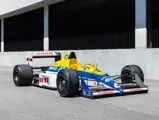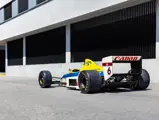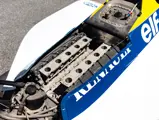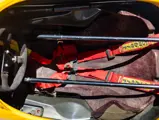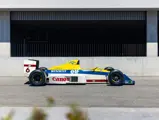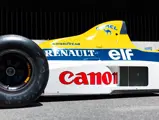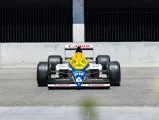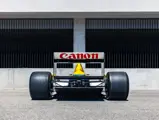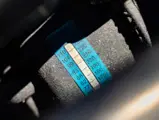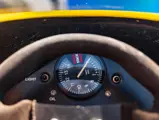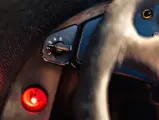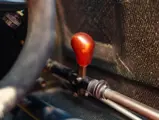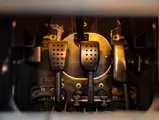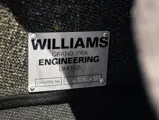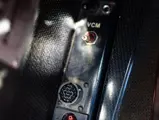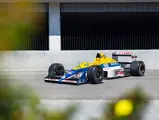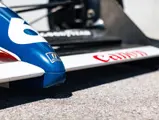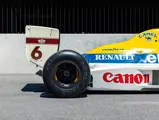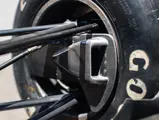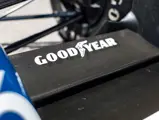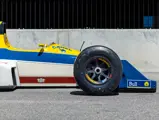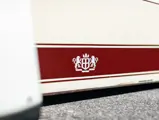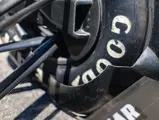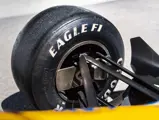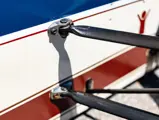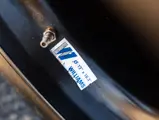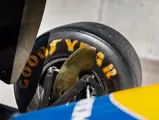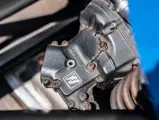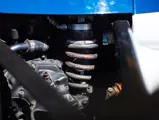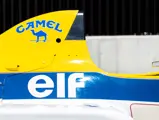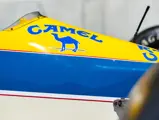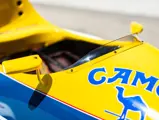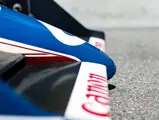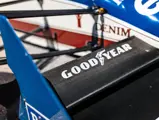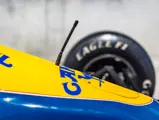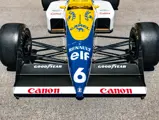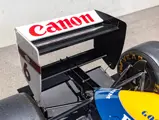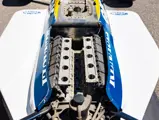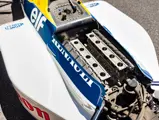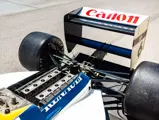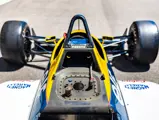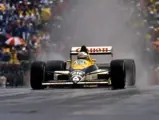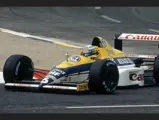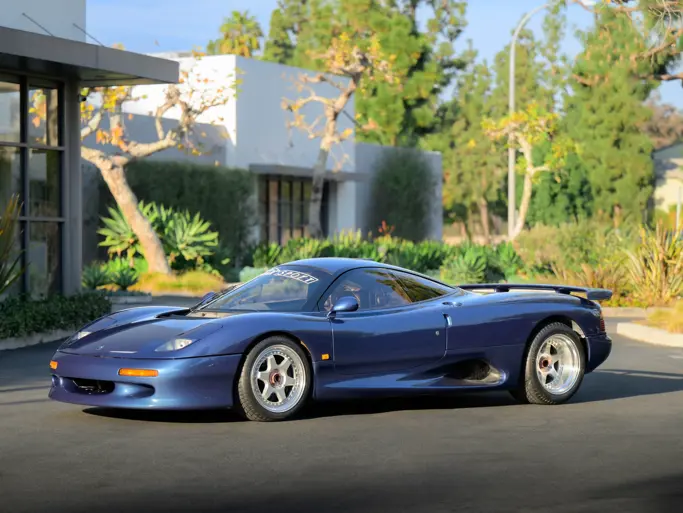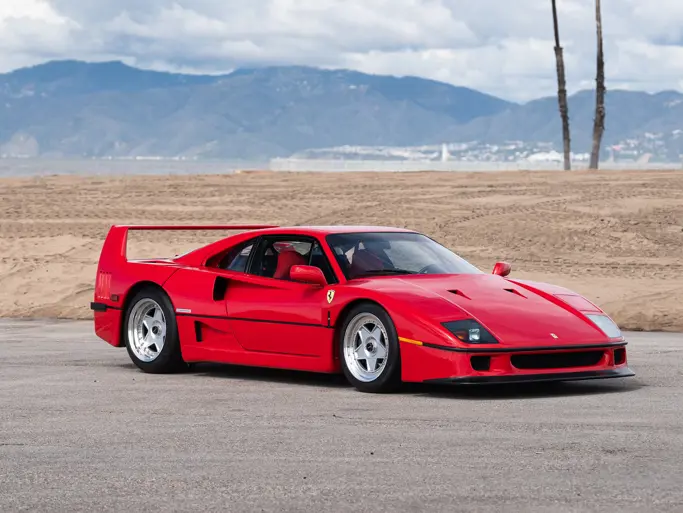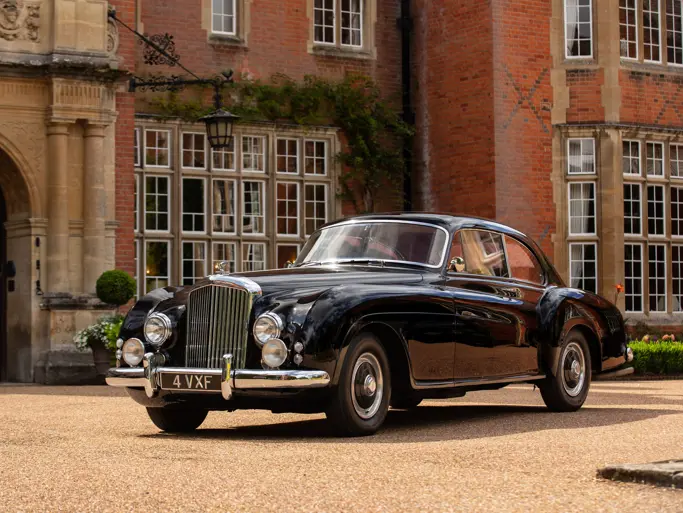St. Moritz 2022
1989 Williams FW12C
{{lr.item.text}}
CHF1,250,000 - CHF1,750,000 | Not Sold
 | St. Moritz, Switzerland
| St. Moritz, Switzerland
{{internetCurrentBid}}
{{internetTimeLeft}}

- The first Williams design powered by the 3.5-litre V-10 Renault engine that would go onto claim many titles
- Driven by Riccardo Patrese in four Grands Prix, finishing 3rd in France and 4th in Germany
- Pole-winning car at the Hungarian Grand Prix; the only non-McLaren pole position of 1989
- Used as the team spare car at Grands Prix in Monaco, Mexico, United States, Canada, and Great Britain
- Acquired directly from Frank Williams after the end of the car's racing career
In contrast to their major competitors—Ferrari, Lotus, and McLaren—Williams opted to run its normally aspirated stopgap FW12-Judd in the 1988 World Championship. The team’s rivals persisted with their outgoing 1.5-litre turbocharged engines for one final season ahead of the sport’s transition to 3.5-litre atmospheric engines for 1989.
Significantly, Williams had a contract in place with new engine supplier, Renault, for 1989. This enabled them to race the FW12 while simultaneously testing the Renault RS1 V-10-engined FW12B. Over the winter, Williams’ designer Enrique Scalabroni further refined the FW12B into the FW12C. The major design changes centred around fine-tuning of the complex Renault installation and a reversion to Passive suspension in place of the FW12’s sometimes-problematic Active system.
Although Williams retained the services of the highly experienced Riccardo Patrese for 1989, they replaced the Ferrari-bound Nigel Mansell with the capable Belgian driver, Thierry Boutsen. The FW12C immediately proved quick, if inconsistent and initially unreliable. This was underlined by the first four rounds of the 1989 Championship yielding a 2nd place for Patrese in Mexico and a 4th place for Boutsen in San Marino. All the while, four mechanically related retirements resulted in a disappointing Monaco Grand Prix, in which the pair finished 15th and 10th respectively. However, a strong remainder of the season resulted in the pair scoring 11 podium finishes—including two wins for Boutsen in Canada and Australia—with Williams finishing a highly satisfactory 2nd in the Constructors’ standings, only behind the all-conquering McLaren team.
One of five FW12Cs constructed, chassis 10—the car offered for sale here—commenced its Grand Prix career on spare car duty at the third round of the Championship in Monaco. It retained this role at the subsequent Mexican, US and Canadian Grands Prix before making its race debut in the French Grand Prix at Paul Ricard, in the hands of Patrese.
Having qualified a mediocre 8th, the Italian was fortunate to avoid a sizeable first corner crash which had Gugelmin’s March turn upside down after clipping Boutsen’s sister Williams, eliminating both Ferraris of Mansell and Gerhard Berger in the process. An immediate red flag necessitated a restart, although Senna’s McLaren, Nannini’s Benetton and Berger all subsequently retired, thereby promoting Patrese to an unexpected 2nd with just 20 laps remaining. However, under pressure from Mansell, the Italian made a rare mistake; a spin costing him the position but still yielding 3rd place at the flag and four World Championship points—much to the delight of the assembled Renault dignitaries.
After a brief return to spare car duties at Silverstone, FW12C/10 travelled to Hockenheim for the German Grand Prix, where it was once again allocated to Patrese. However, Senna’s dominance resulted in him qualifying almost one second clear of 2nd-placed Prost, and nearly two seconds clear of the remainder of the field. Patrese lined up 5th on the grid and, although dropping to 8th on the opening lap following a chaotic start, put in another workmanlike performance to finish 4th behind Senna, Prost and Mansell: exalted company indeed.
The 10th round of the Championship, in Budapest, provided Patrese—and FW12C/10—with a richly deserved pole position. It was one that would ultimately represent the only non-McLaren pole of the year. A heroic lap by the popular Padovano left him more than a quarter of a second clear of Senna and, incredibly, almost a second-and-a-half ahead of Prost. However, after a strong start, the race turned out to be one of frustration and disappointment; a failing radiator making its presence felt after only a handful of laps, permitting Mansell and Senna past to finish 1st and 2nd. Eventually the unit failed altogether on lap 54, ushering Patrese into retirement and preventing an otherwise secure podium finish.
The Belgian Grand Prix at Spa-Francorchamps was to prove FW12C/10’s competitive swansong, with Patrese once again enjoying use of the car all weekend. Both Boutsen and Patrese struggled for pace in qualifying; their near identical 4th- and 5th-placed times once again almost two seconds adrift of Senna, who duly took his eighth pole in 11 races. Following a lengthy delay due to heavy rain, the race started in typically challenging Ardennes conditions and proved to be one of attrition; no fewer than seven drivers crashing out, including Patrese shortly before half distance.
Although Patrese and Boutsen used alternative FW12C chassis at Monza, the team shifted its attention to the new FW13 design for the final four races of the year. However, by this time, the FW12 had already cemented its place in Williams folklore. Boutsen’s maiden win in Montreal was a mere precursor to the 10 World Championships—six Constructors’ and four Drivers’—which would ensue over the next eight seasons.
Retained by Williams until the end of its racing career, FW12C/10 was acquired directly from Frank Williams. The car is preserved with its 3.5-litre Renault RS1 V-10 engine, albeit incomplete. Curiously, the car shows evidence of having been used for display purposes at some stage; the beige decals of erstwhile 1989 tobacco sponsor Barclay having been neutralised, and the engine cover bearing the branding of Camel, whose sponsorship of Williams did not commence until 1991. The car does not run as a result of its incomplete engine and time spent on static display. Please contact an RM Sotheby’s Specialist to find out more about returning the car to running condition.
The era of atmospheric race engines at the highest level is fondly remembered by many, and underlines remaining enormous public appeal. To this end, FW12C/10 could be an ideal candidate for sympathetic recommissioning. Either way, with such historical standing as a significant car that was directly involved with many legends of the sport, the opportunity to acquire such a machine cannot be passed up.

